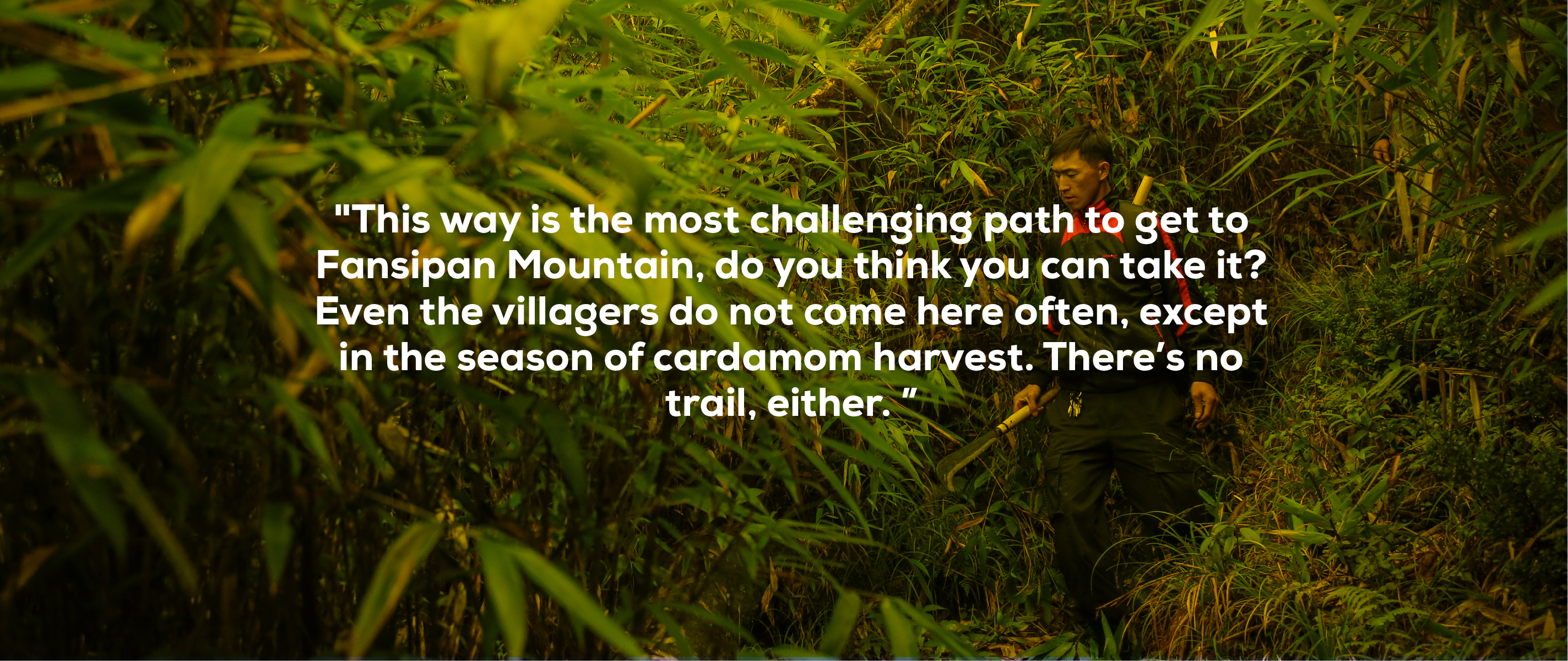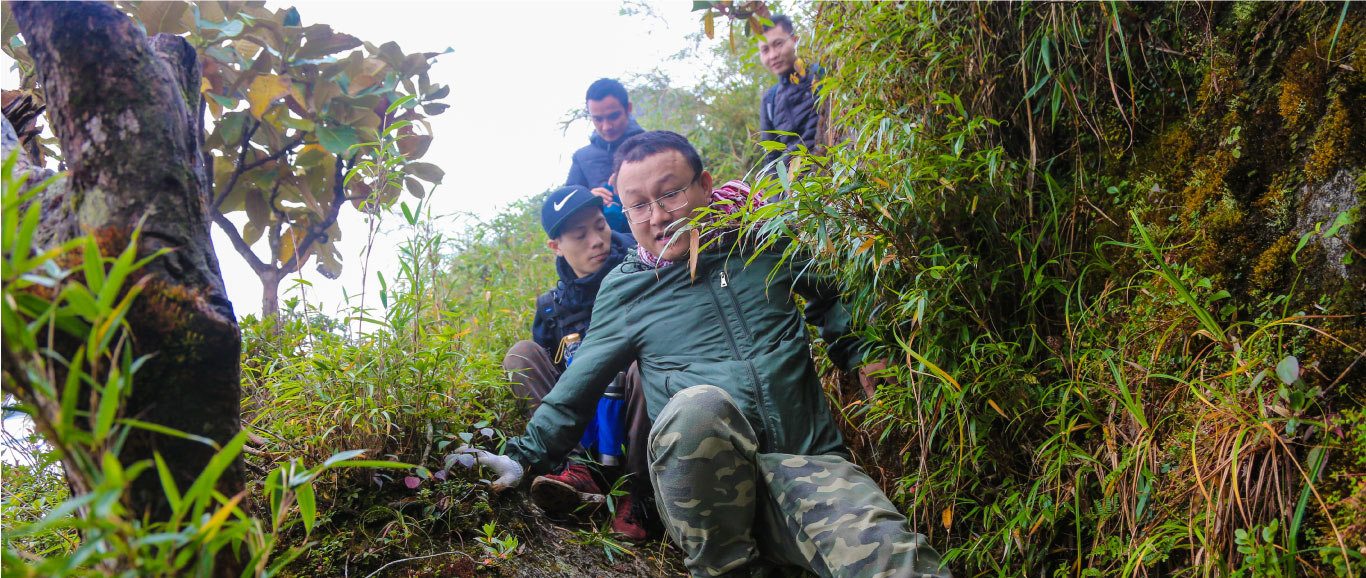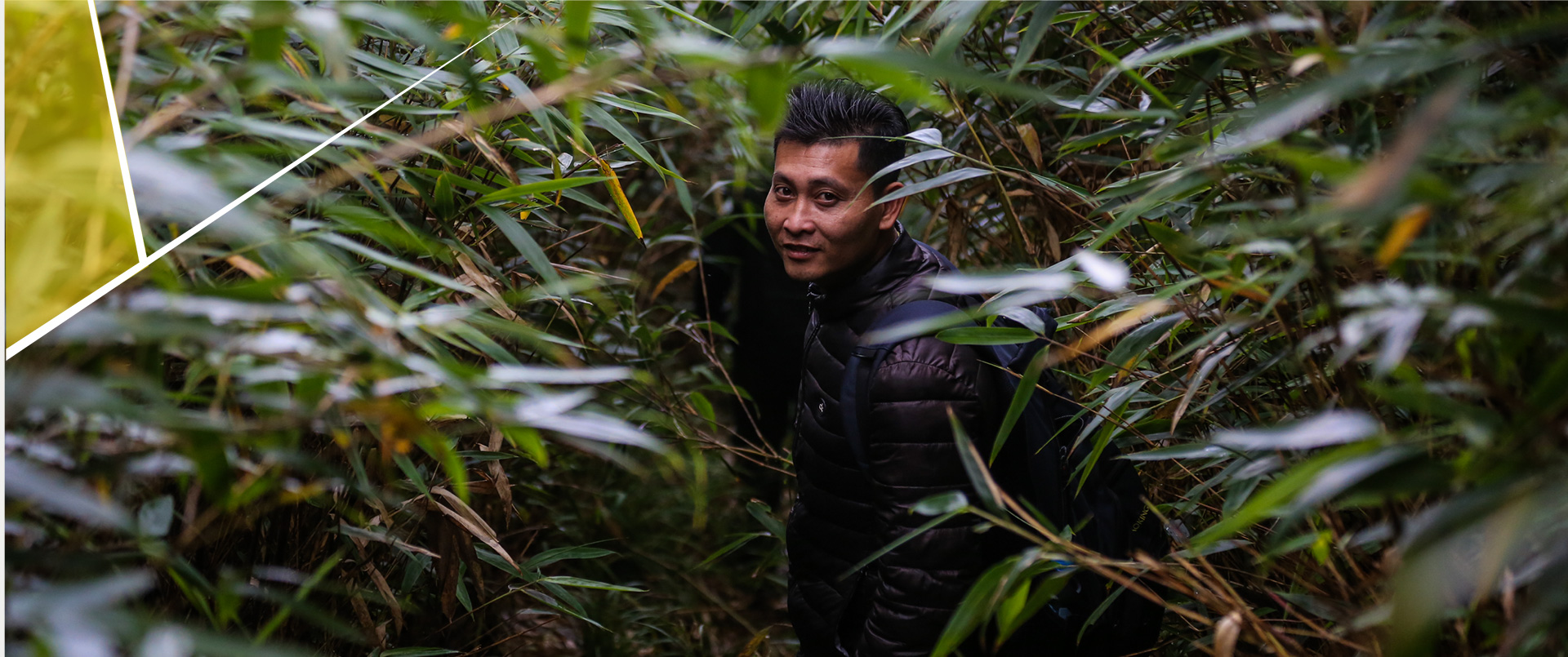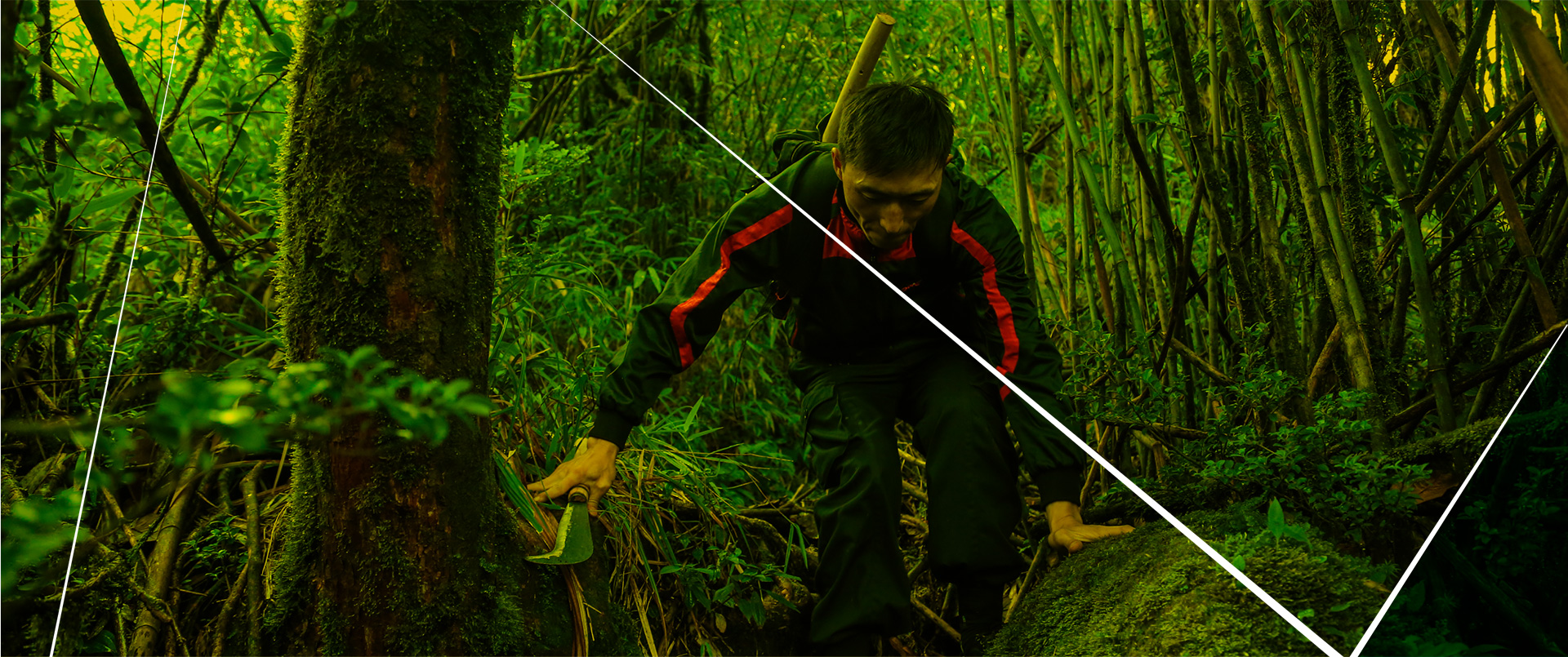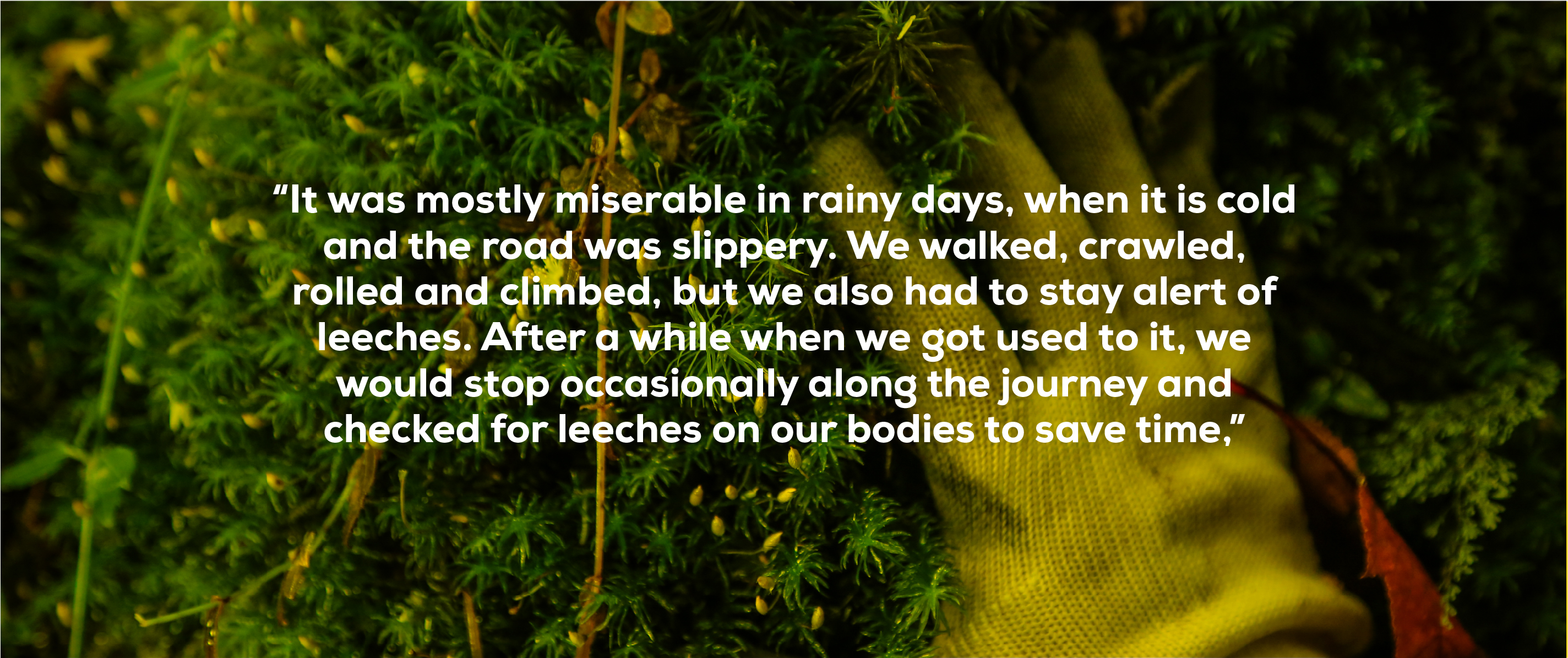To better understand the scale and complexity of building the cable-car project — not to mention the conditions that the engineers and workers endured from late 2013 to early 2016 — our journalists returned to Hoang Lien forest with some of the ‘crazy gang’ to retrace their steps. With more than 6km of cable lines, and a difference in elevation of 1,410m from the start to the finish, the Fansipan Cable Car is the most modern three-rope cable system in all of Asia. But these rather dry statistics don’t really capture the full extent of the arduous journey the engineers and workers undertook to make this project a reality. Two years after the cable car went into operation in 2016, some of the team remain in Sapa, while some are busy working on other projects, but wherever they are, they all vividly recall the many days they spent carrying materials and hauling cables on their shoulders and with their bare hands through the wilds of Hoang Lien forest. Our journalists returned with three of the project’s veterans and local guides to get a sense of how challenging this project must have been to implement from the beginning until the very end.
Into the wild
Mr. Luc Thanh Chien, a local who knows Fansipan very well, told us that we would be trying to take one of the hardest routes to the summit. In fact, there wasn’t even a trail to take. Chien said the mountain-dwelling locals only came to this area during the season of cardamom. “Are you sure you want to take this trail?” he asked.
According to the plan, Chien and three other "veteran" workers who set up the first stones of this project will the be ones guiding us through the journey to conquer the cable pulling route half a decade ago.
Yet, in 2013, this is where a team of engineers and workers first began trying to build a whole cable-car system from scratch. According to Chien, after 2016, when the cable car was officially put into operation, this part of Hoang Lien forest was completely closed off again. The trail, which runs from San Chai village through a reservation area of Hoang Lien national forest, was considered too dangerous for trekking. We were only allowed to enter with special permission from the Forest Rangers.
We arrived at the point of departure, somewhat daunted, carrying mostly drinking water in our backpacks. We were not only scared of the perilous mountain path we had to climb but also desperately trying to cover ourselves up to avoid leeches clamping onto our skin. The local guides couldn’t suppress a chuckle — they were dressed in T-shirts and jeans. Ma A Tong, a tall, rangy Mong Sa Pa man, carried a worn-out, military-style backpack, and gripped a bush-whacker in his hand, was ready to start hacking his way through the dense forest. “Don’t worry, it only takes three hours to get to the T2 post from here," he said with a broad smile.
Leaving San Chai, passing the golden-coloured rice paddies, our group marched to the part of the mountain known as Đỏ (Red) Slope. True to its name, the whole slope was indeed red — blood red to be accurate.
The terrain was extremely slippery. The water, which comes down from high above, has carved into the land, forming a gully along the mountainside. To us it appeared like an open wound that had not healed. The slope ahead appeared incredibly steep. The forest was dense with trees. We stood unsure of how we would progress, eventually realising, at times, the only way to move forward would be to crawl. Occasionally, as we progressed up the mountainside, we heard or saw rocks tumbling down the slope.
The slope became steeper. After just 15 minutes, we were already exhausted. We persevered as best we could. Pressing ourselves against the face of the mountain, our clothes were soon sopping wet from sweat and moisture, while our hearts pounded from the physical exertion. We clambered on.
Recalling the first time he explored the area, Hau, an architect from Quang Nam Province, winced at the memories. “When we working here, I remember some days being so tired. One day, I was lagging behind the others. I could only lay down and cry. I didn't know why I had chosen this job. My body, my arms and legs were like jelly. I just wanted to quit and go home." Many of us were struggling, too. Two members of our group started to suffer from altitude sickness and returned down the mountain side. The rest of us continued as best we could. After only 45 minutes of climbing, our faces were red and our bodies were drenched in sweat. As we paused to catch our breath, Ma A Tong looked at us and frowned: "At this speed, we can’t reach the destination in three hours.”
In front of us, the primeval forest appeared so wild and dense it might as well have been impenetrable. If it weren’t for the guides, we would be utterly lost. But one member of the group, a young electrical engineer named Tran Dinh Luat recognised something familiar. He walked over to a tree and removed a thick layer of moss from the trunk. “Look, this is a trace I carved into this tree when climbing the slope in 2013,” he exclaimed. The mark had turned into a dark colour from the passing of time but it was apparent. “The easiest way to find the original route we took is actually to find the marks on old trees like this. From here to T2 pillar, we could keep looking for the carved signs and we would never get lost. You could try to look up and follow the cable car, but it’s almost impossible in some areas where the cable lines are hung across a ravine,” said Luat with a proud smile.
The deeper we trekked into the forest, the harder the terrain became, and the more draining it became. Traces of the old trail gradually revealed themselves. We could see where engineers constructed temporary bridges to cross small gorges or streams. We were warned to tread carefully. If you weren’t cautious, you could fall down by tens of meters into a creek or ravine. We noticed a primitive ladder that the workers had actually carved out of a hardwood trunk to help them climb up what was otherwise an impassable slope. But many of the trails the engineers and workers had used had completely disappeared. At one stage we came up against a section of the mountain that was as vertical as a cliff. There was only a frayed rope still hanging down. We didn’t know to what extent the rope had been worn down overtime, but it held as we climbed up, one by one.
It was hard to believe that the engineers and workers had been working their way through the forest in this fashion, for more than 800 days. Retracing their steps, the men shared some stories and observations. “This trail did not exist when we first came here. It was only formed as a result of us walking this way,” said one. “We made that bridge over the steam but always had to set it aside during the flood season as otherwise the water would wash it away.” For a moment, the stories of these fading traces seemed to pull the engineers back to a moment in time, when the Fansipan Cable Car was still just a dream and completing it still felt like an insurmountable challenge. They were clearly emotional and excited to return here, which inspired us to forget our own fatigue and persevere up the mountain as the mist grew thicker and thicker all around us.
The journey continues
The closer we got to the T2 pillar, the harder it became to walk. The fields of cardamom were now far behind us. There were only steeper slopes ahead of us. Sensibly, Luc Thanh Chien, the "veteran" of the guiding group, dropped to the back of the group, just in case one of the less experienced mountain climbers fell behind or needed assistance.
As we trekked through the forest, occasionally, we heard monkeys fighting for food somewhere on the thick tree branches. Chien laughed at our surprise. Five years ago, when foreign engineers and experts came here they were also surprised when they heard monkeys and birds. He told us that when the engineers and workers first came to this part of Hoang Lien forest, which runs all the way up to T3 and T4 pillars at a height of over 2,000m, it would have been full of wild animals, including the red-tailed green snake.
Tam, who had been a cable-hauling worker on the project, pausing for breath and wiping away the sweat from his brow, said: "Almost everyone who came here to work on the route met a snake. One day, when I was hauling a cable, I suddenly heard a slithering sound. I looked down to see a green snake pecking at my boots! I know of others who woke up in bed with a snake crawling over them. They just flung the snake away and ran for their life!”
The workers, who used to sleep in temporary living quarters along the cable route, once found a whole knot of green snakes, dozens of them, all twisted around each other during mating season. One young guard, who was tasked with guarding the T3 pillar, recalled how on his first day of work, he was scared to death when he saw a snake hanging over the wall of the restroom. With this becoming an increasingly common sight, the temporary houses near the higher T pillars were all carefully constructed so there were no gaps for reptiles to slither in. Another fear for the workers in Hoang Lien forest was dealing with leeches. On rainy days, leeches seemed to be everywhere. The workers tried using insect repellent and applying palm oil around their legs, but these forest dwelling blood-suckers were undeterred.
“It was really miserable on rainy days, when it was cold and the road was slippery,” said Luat. “Whatever we did, wherever we went, the leeches were everywhere! I guess after a while we just got used to it. We would just stop occasionally and check for leeches on our bodies, remove them if there were any, and then get back to work.” We pressed on until 6pm, when the forest falls into darkness. It had been more than five hours since our journey began. The whole group was sitting, breathing heavily on a flat limestone flap protruding from the edge. The bright full moon could be seen high above our heads, illuminating the cable cabins which ran continuously, and effortlessly to the top of Fansipan and back. But our destination was still far away. All of bags were mostly transferred to the guides. Red faced and weary, we looked in the direction of Sa Pa. Its lights could be seen in the distance.
As we couldn’t see where we were going, Ma A Tong was assigned to scout ahead. After about 10 minutes, he returned. “Don’t worry, the T2 pillar is just beyond this slope. Come on!” he called out.
TThe hope of seeing our destination gave the whole group the strength to stand up and stumble on, following the slim, lanky shadow of our navigator, A Tong into the darkness. We had to tread carefully again. The trail to the pillar was precarious to say the least. It ran alongside the edge of a cliff. We clung to trees while walking step by step. The cold air of forest and the patchy darkness made some of us shudder. It wouldn’t get easier. Later on, when we continued to the workers’ houses at T3 and T4 pillars, there was no discernible trail or path. In order to reach the T3 pillar, security officers, who have to protect the pillars, have to climb up a rope that is tied to a tree on higher ground. Further on, the T4 pillar was located beyond a rocky slope covered with azaleas and ancient chestnut trees. We were told that there was no path or trail leading there, so security officers take the cable car to the T4 pillar when they are assigned to come here. “It is easy to lose your way in a place like this,” Chien reminded us. We finally found T2 station after another 30 minutes of groping around in the dark. We could just make out the shape of the guards’ houses in the middle of the Hoang Lien forest. Here pairs of security guards take turns to ensure the safety of the pillars, which are considered to be the backbone of the entire 7km-long cable car line. Every day, the security guards will be found sitting on the porch of the security house, looking up towards the lit cabins running back and forth through the middle of the old forest, like the guardians of a secret trail from a fairy tale.
Onward and upwards
In the end the journey to conquer all five T-pillars of the Fansipan cable car line had to be split across two trips due to a deep ravine (nearly 100m deep) between T3 and T4. To ensure safety for all parties, after reaching T3 pillar, the team was advised to return. It took nearly a month for us to pull ourselves together to return to Fanispan and visit the remaining towers. This time, however, we would be going downhill. For the engineers and workers who paved the way for the cable to come through in 2013, the only way had been uphill. They had to cross the deep ravine that stopped us. How had they managed? This is truly treacherous and dangerous terrain to be exploring on foot. Over the years, explorers and mountaineers have been injured — or worse — when trekking in the area. In June 2016, Aiden Shaw Webb, a young English drama student, and a rock climbing enthusiast, was exploring the area, looking for places where he could free-climb as he made his way to the summit of Fansipan on a solo-trek. It was this deep ravine between T3 and T4 where Webb met his tragic destiny. While trying to cross the ravine, Webb had lost his footing and slid into the depths. Heartbreakingly, he was alive at the bottom and managed to send a text message to alert his girlfriend, but he was grievously injured. The search to find him began but his injuries proved fatal.
Later reports from Sapa District Police confirmed that his body was found in a gully close to two small waterfalls at an altitude of 2,500 m, near the T4 pillar of Fansipan - Sapa cable car.Recalling how they navigated this cable-hauling route in 2013, now many of the workers shake their heads, wondering how they ever managed it. They call themselves the ‘crazy guys’ and admit they risked themselves by choosing to “eat the wind, sleep in the forest, breathe the mountain air” on a ‘route’ with no discernible path. Hundreds of engineers, workers, and experts were forced to grope around in the darkness, holding their breath in anticipation of a possible disaster. But little by little, and together as one, they helped to create a spectacular cable car line. Thanks to their incredible physical efforts, now others can fly through the air with the greatest of ease.
-
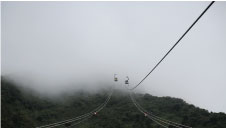 Album: Fansipan Cable Car - A World Record Breaking Project
Album: Fansipan Cable Car - A World Record Breaking Project
-
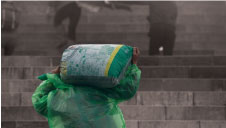 Article: 800 Days of carring stones up a moutain
Article: 800 Days of carring stones up a moutain
-
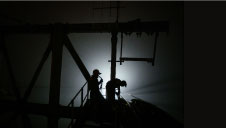 Article: Bringing electricity to ‘the roof of Indochina’
Article: Bringing electricity to ‘the roof of Indochina’
-
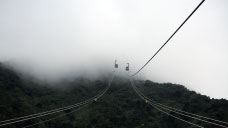 Article: Taking cable-car engineering to new heights
Article: Taking cable-car engineering to new heights
-
 Article: The most perilous moments
Article: The most perilous moments
-
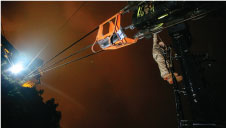 Album: The Tarzans of Hoang Lien Forest
Album: The Tarzans of Hoang Lien Forest
-
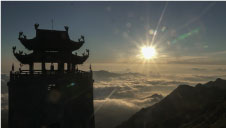 Album: The sky high temples of Fansipan
Album: The sky high temples of Fansipan
-
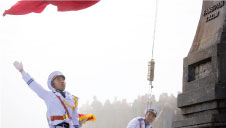 Album: A flag-raising ceremony on Fansipan
Album: A flag-raising ceremony on Fansipan
-
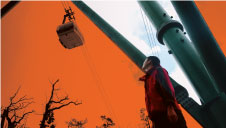 Album: Out in the woods
Album: Out in the woods
 Fansipan Reporting
Fansipan Reporting

